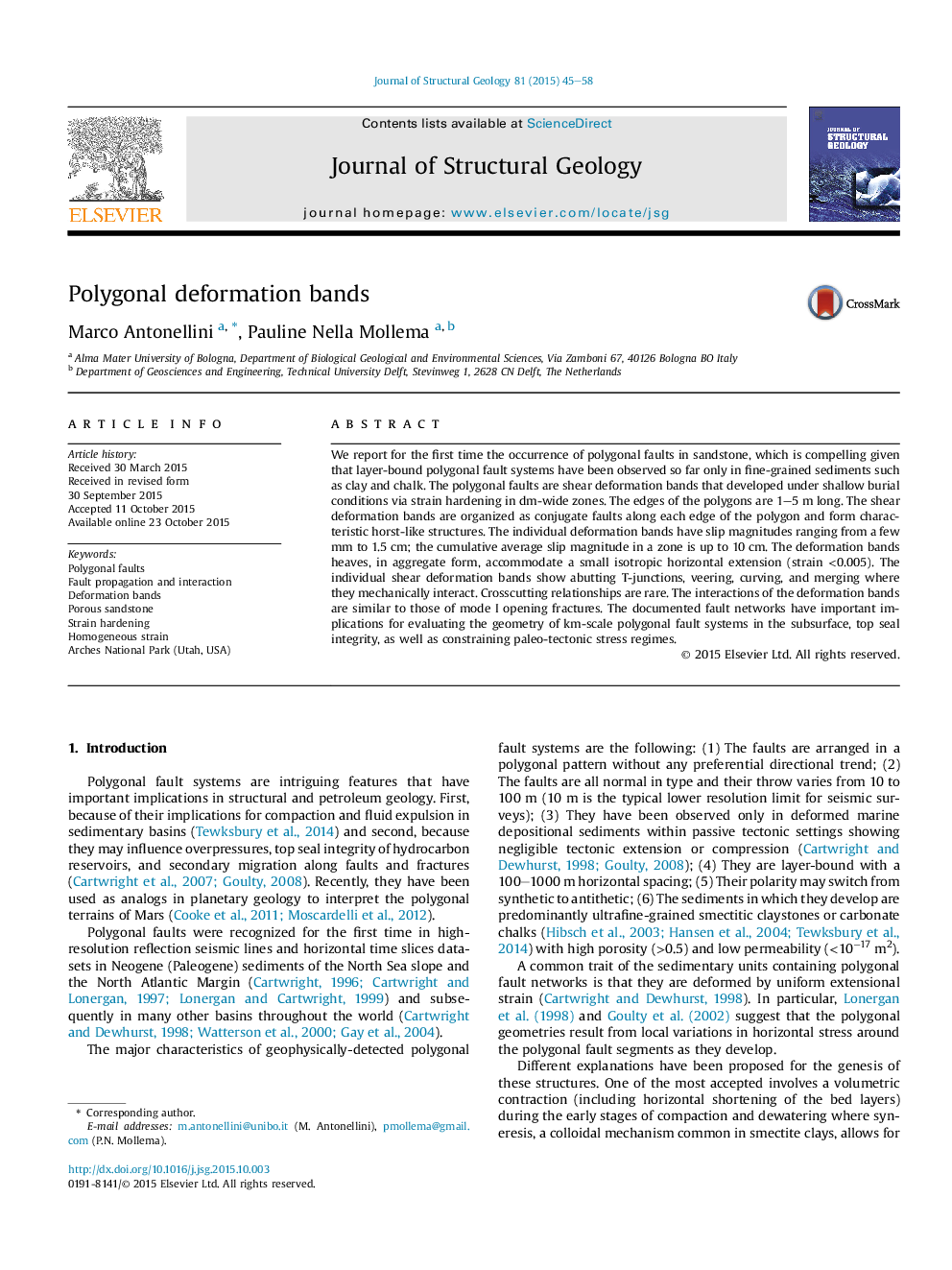| Article ID | Journal | Published Year | Pages | File Type |
|---|---|---|---|---|
| 4732919 | Journal of Structural Geology | 2015 | 14 Pages |
•First description of deformation bands forming a polygonal system.•First description of polygonal faults in a sandstone outcrop.•We measure slip distribution along polygonal faults.•We propose a model for polygonal faults propagation.•Implications of polygonal faults on regional geology.
We report for the first time the occurrence of polygonal faults in sandstone, which is compelling given that layer-bound polygonal fault systems have been observed so far only in fine-grained sediments such as clay and chalk. The polygonal faults are shear deformation bands that developed under shallow burial conditions via strain hardening in dm-wide zones. The edges of the polygons are 1–5 m long. The shear deformation bands are organized as conjugate faults along each edge of the polygon and form characteristic horst-like structures. The individual deformation bands have slip magnitudes ranging from a few mm to 1.5 cm; the cumulative average slip magnitude in a zone is up to 10 cm. The deformation bands heaves, in aggregate form, accommodate a small isotropic horizontal extension (strain <0.005). The individual shear deformation bands show abutting T-junctions, veering, curving, and merging where they mechanically interact. Crosscutting relationships are rare. The interactions of the deformation bands are similar to those of mode I opening fractures. The documented fault networks have important implications for evaluating the geometry of km-scale polygonal fault systems in the subsurface, top seal integrity, as well as constraining paleo-tectonic stress regimes.
